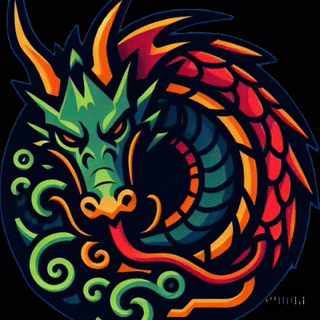The Hierarchy of Celtic Gods: A Comprehensive Overview
Introduction
The Celtic pantheon, a complex and multi-faceted belief system, spans various regions and cultures, including the Irish, Welsh, and Gaulish traditions. Unlike the rigid hierarchies found in some other mythologies, the Celtic divine structure is more fluid, with deities often overlapping in function and regional importance. However, general patterns emerge, revealing a stratified system consisting of primordial deities, high gods, warrior gods, and local or tribal deities. This paper explores the hierarchical organization of the Celtic gods and provides scholarly resources for further study.
The Primordial and Cosmic Deities
At the highest level of the Celtic pantheon are the primordial and cosmic deities, often associated with creation, fate, and overarching natural forces.
Danu
Danu, regarded as the mother goddess of the Tuatha Dé Danann, embodies fertility, wisdom, and the power of rivers. She is considered the progenitor of many of the major Irish deities and a representation of the land itself.
Anu
Sometimes equated with Danu, Anu is another maternal figure symbolizing the earth's abundance. She is closely associated with Munster in Ireland, where "The Paps of Anu" hills are named after her.
Don
The Welsh counterpart to Danu, Don appears in the Mabinogion as the progenitor of important deities such as Gwydion and Arianrhod.
High Gods: Kings and Rulers of the Pantheon
The high gods, or ruling deities, often hold dominion over critical aspects of life such as sovereignty, war, and wisdom.
The Dagda
As the father figure of the Tuatha Dé Danann, the Dagda wields immense power. He is associated with fertility, druidic wisdom, and abundance. His magical cauldron, club, and harp grant him control over life and death.
Lugh
Lugh, known as the "many-skilled god," is a prominent figure associated with kingship, warfare, and craftsmanship. His name and worship spread beyond Ireland into Gaul, where he was venerated as Lugus.
Nuada
Nuada, the original king of the Tuatha Dé Danann, represents sovereignty and justice. He wields the Sword of Light, one of the four sacred treasures of the Tuatha Dé Danann.
Warrior and Protective Deities
These gods oversee war, protection, and heroism, often intermingling with sovereignty and fate.
Morrígan
A complex goddess associated with war and prophecy, the Morrígan is a triadic deity, sometimes appearing as Badb and Macha. She influences battle outcomes and embodies the chaos of war.
Cúchulainn and Divine Heroes
Though technically a mortal, Cúchulainn bears divine ancestry and receives aid from the gods, particularly Lugh. His feats elevate him to near-divine status within Celtic mythology.
Local and Tribal Deities
Celtic mythology is deeply regional, with many deities being worshiped in specific localities.
Brigid
Brigid, a goddess of healing, poetry, and smithcraft, was widely revered in both Ireland and Britain. Her cult persisted into Christian times, where she was syncretized as Saint Brigid.
Epona
Epona, a Gaulish goddess associated with horses, had widespread veneration across Celtic Europe and even in Rome. She symbolized fertility, travel, and protection.
Scholarly References and Further Research
For those interested in delving deeper into the hierarchy of Celtic deities, the following scholarly works provide invaluable insights:
Green, Miranda. The Gods of the Celts. Sutton Publishing, 1986. Link
MacCana, Proinsias. Celtic Mythology. Hamlyn, 1970. Link
Koch, John T. Celtic Culture: A Historical Encyclopedia. ABC-CLIO, 2006. Link
Cunliffe, Barry. The Celts: A Very Short Introduction. Oxford University Press, 2003. Link
Conclusion
The hierarchy of Celtic gods, while complex and fluid, reveals an underlying structure that blends cosmic forces, ruling deities, warrior figures, and localized spirits. Their roles and attributes reflect the values and concerns of ancient Celtic societies, offering a rich tapestry for modern researchers and enthusiasts alike.
480-366-3550 (Domain Sales)
© SDBEST LLC, 2025. All rights reserved.
Sponsorship Disclosure
Terms of Service
